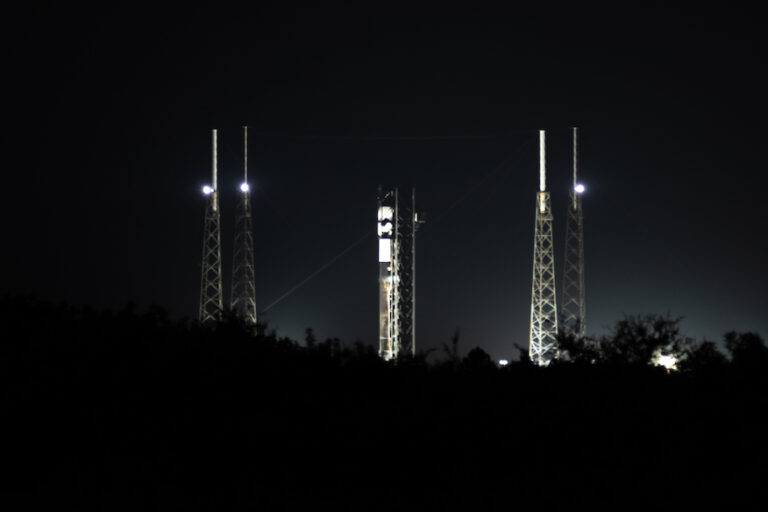
Update 2:13 a.m. EDT: SpaceX has confirmed the successful deployment of the Starlink satellites.
SpaceX continued its post-mishap recovery with the first of a series of planned launches early Sunday morning, as the company prepared to launch two Falcon 9 rockets from pads in Florida and California.
First up was the Starlink 10-4 mission, which added 23 Starlink Version 2 Mini satellites to the growing mega-constellation. The launch took place at 1:09 a.m. EDT (5:09 a.m. UTC) and also marked SpaceX’s 300th launch of the flight-proven booster.
The mission came just after SpaceX safely resumed flight early Saturday morning, just over two weeks after the Falcon 9 launch, which was the first Starlink mission to experience a second-stage failure on July 11 from Vandenberg Space Center.
The Falcon 9 booster supporting this mission, tail number B1077, made its 14th launch and landing in the SpaceX fleet. During its previous flights, the booster launched NASA’s Crew 5 mission to the International Space Station, the GPS 3 Space Vehicle 06 satellite, and two cargo missions to orbital outposts.
A little over eight minutes after launch, B1077 landed on SpaceX’s drone vehicle, “A Shortfall of Gravitas,” the 77th landing on ASOG and the 331st booster landing ever.
The Starlink-10-4 mission was the 51st dedicated Starlink launch of 2024 and the 114th dedicated launch of the V2 mini-series Starlink satellites.
There are more than 6,100 Starlink satellites in low Earth orbit, according to orbital tracking expert and astrophysicist Jonathan McDowell. SpaceX said Wednesday that Starlink internet service is now available on more than 1,000 aircraft thanks to a recent deal with airline WestJet.

